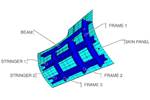Compositadour launches Turbolab facility for propulsion systems R&D
Test bench platform, located in France, is dedicated to technology transfer of aerospace engine innovations including systems electrification, fuels and materials use like CMC and hybrid composites.
Compositadour (Bayonne, France), a specialized technological platform that specializes in composites, robotics and additive manufacturing, announces the inauguration of its sister R&D platform, Turbolab, under the management of the Estia Engineering School at the Technocité site in Bayonne. This test bench facility will be dedicated to R&D purposes within the domain of innovative propulsion systems.
Turbolab was initiated by the Pays Basque Community, which has taken on the challenges of ecological and energy transitions and regional resilience. The shared testing facility was developed to support projects and companies addressing the carbon impact of aerospace. “This project exemplifies what we must envision for tomorrow in terms of public action and economic stakeholder support: a partnership between a major local company, Akira Technologie, Estia Engineering School and the Pays Basque Community,” notes Jean-René Etchegaray, president of the Pays Basque Community.
Turbolab serves as a new tool for technology transfer, enabling the creation of a complete ecosystem around innovative propulsion systems, including systems electrification, new fuels (SAF, H2 and so on), and materials and process (like composites) topics. The test bench facility comprises testing for service provision, support for R&D and spaces for higher education opportunities.
Engine configurations already being studied include the DGEN 380, OPUS 380-H and Banc Hélic, which feature several composite components:
- Cold air flow components made from high-performance thermoplastic and thermoset composites, such as the air inlet, fan case and engine cowling.
- Hot air flow components using ceramic matrix composites (CMC) for high-temperature applications, including the hot nozzle, exhaust cone and AFT pylon fairing.
- Hybrid composite/titanium parts like fan blades, booster casing and shafts, designed to enhance structural performance while reducing weight.
- Aircraft blades or propellers and for urban air vehicle (UAV) rotors to meet the growing demand in sustainable aviation and urban mobility sectors.
In parallel, Turbolab has a couple of ongoing research projects aimed at pushing the boundaries of composites applications in propulsion systems:
- Thesis 1 (ongoing): Developing a design method for turbomachinery shafts made of hybrid composite/titanium parts for controlled dynamics and damping.
- Thesis 2: Process optimization for manufacturing turbomachinery shafts. Hybrid composite/titanium parts are also strong candidates for the development of this thesis.
Ultimately, the support space is meant to establish an internationally recognized testing center at the Technocité site and to set up a research chair; it has already led to the creation of a Joint Laboratory (LabCom ANR).
The facility, constructed by the Pays Basque Community to be environmentally conscious, features key contributions from partners. This includes testing and measuring equipment, along with “test vehicle” engines from Akira; construction of an aerospace lab by Compositadour to test and characterize the entire aerial propulsion system; and Estia’s training modules.
Related Content
-
Bombardier begins manufacture of Global 8000 business jet
Ultra-long range business jet featuring CMC-intensive engine and a range of 8,000 nautical miles is set to enter service in second half of 2025 as it remains on track for flight testing.
-
ORNL, Sierra Space create novel C/SiC TPS for reusable space vehicles
CMC tiles will be used on the Sierra Space DC100 Dream Chaser spaceplane carrying critical supplies and science experiments to and from NASA’s ISS.
-
The future of quartz and oxide fibers at Saint-Gobain Advanced Ceramic Composites
New business builds on 100-year legacy in quartz, prepares for growth, while starting production of oxide fibers to meet increased demand for CMC by aerospace and industrial sectors.


















